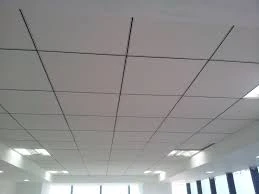- Afrikaans
- Albanian
- Amharic
- Arabic
- Armenian
- Azerbaijani
- Basque
- Belarusian
- Bengali
- Bosnian
- Bulgarian
- Catalan
- Cebuano
- Corsican
- Croatian
- Czech
- Danish
- Dutch
- English
- Esperanto
- Estonian
- French
- German
- Greek
- Hindi
- Indonesian
- irish
- Italian
- Japanese
- Korean
- Lao
- Malay
- Myanmar
- Norwegian
- Norwegian
- Polish
- Portuguese
- Romanian
- Russian
- Serbian
- Spanish
- Swedish
- Thai
- Turkish
- Ukrainian
- Uzbek
- Vietnamese
Dhj . 27, 2024 01:01 Back to list
Fire-Resistant Ceiling Hatch for Enhanced Safety and Compliance in Building Design
Understanding Fire-Rated Ceiling Hatches Essential Safety Features for Buildings
In the realm of building construction and safety, the term fire-rated ceiling hatch exemplifies a critical element that may not always receive the attention it deserves. These specially designed hatches serve as vital barriers in fire protection systems, allowing for safe access while maintaining the integrity of fire-rated ceilings. This article will explore the importance of fire-rated ceiling hatches, their applications, and key considerations to ensure compliance with safety standards.
What is a Fire-Rated Ceiling Hatch?
A fire-rated ceiling hatch is an access point installed in a ceiling that is designed to meet specific fire-resistance ratings. Typically constructed from durable materials such as steel, these hatches are engineered to withstand exposure to fire for a designated period, which can range from 30 minutes to several hours, depending on building codes and requirements. The fire-resistance rating is crucial as it indicates the hatch's ability to prevent the spread of flames and smoke, safeguarding both the people within the building and the structure itself.
Importance in Fire Safety
The primary function of fire-rated ceiling hatches is to facilitate essential access to areas such as attics, mechanical rooms, and other spaces above the ceiling while ensuring safety protocols are upheld. In the event of a fire, personnel accessing these spaces via an unprotected opening could be exposed to dangerous conditions, including intense heat and smoke. Fire-rated hatches are designed to restrict the movement of fire and smoke, allowing only safe access during emergencies and minimizing potential hazards.
Moreover, building codes set forth by local authorities often require the installation of fire-rated hatches in specific areas of a building, especially in commercial and multi-residential structures. Compliance with these regulations is not only crucial for the safety of occupants but also for preventing legal liabilities that could arise in the unfortunate event of a fire.
Applications of Fire-Rated Ceiling Hatches
fire rated ceiling hatch

Fire-rated ceiling hatches can be found in a variety of settings. They are particularly essential in commercial buildings such as offices, hospitals, hotels, and schools, where safety is of utmost importance. Additionally, they play a vital role in residential buildings, especially in townhouses or condos where shared spaces may require strict adherence to fire safety regulations.
In industrial settings, fire-rated ceiling hatches provide access to ventilation and mechanical systems installed in ceilings while ensuring the overall safety of the space. They can also facilitate maintenance tasks in a way that complies with fire safety standards, making them essential for both function and protection.
Key Considerations for Installation
When choosing and installing fire-rated ceiling hatches, several factors should be considered. First, it is essential to ensure that the hatch chosen meets the building's fire-resistance rating requirements and complies with local codes. Installation should be carried out by professionals trained in building safety standards to ensure that the hatch is appropriately sealed and functions as intended.
Regular inspections and maintenance of fire-rated ceiling hatches are also vital. These checks ensure the hatches remain unobstructed and functional, verifying that they can perform effectively during a fire emergency. Additionally, proper signage should indicate the location of fire-rated hatches, ensuring that they can be easily located and accessed when needed.
Conclusion
Fire-rated ceiling hatches are a critical component of a building's fire safety strategy, providing safe access while preventing the spread of fire and smoke. As building codes evolve and safety concerns become increasingly paramount, understanding and implementing fire-rated hatches will play an essential role in safeguarding life and property. Therefore, it is imperative for architects, builders, and facility managers to prioritize these features in their designs and maintenance programs, ensuring a safer environment for all.
-
Transform Interiors with PVC Gypsum Ceiling: A Stylish, Durable, and Moisture-Resistant SolutionNewsMay.19,2025
-
The Smart Interior Upgrade: Discover the Durability and Versatility of Gypsum Ceiling Access Panel SolutionsNewsMay.19,2025
-
The Smart Choice for Interior Design: Discover the Value of PVC Gypsum Ceiling SolutionsNewsMay.19,2025
-
Mineral Fiber Ceiling Tiles: The Smart Blend of Performance and AestheticsNewsMay.19,2025
-
Mineral Fiber Ceiling Tiles: The Superior Choice Over Gypsum for Sound and Fire SafetyNewsMay.19,2025
-
Mineral Fiber Ceiling Tiles: Eco-Friendly Strength and Style for Every CeilingNewsMay.19,2025







